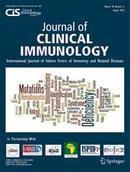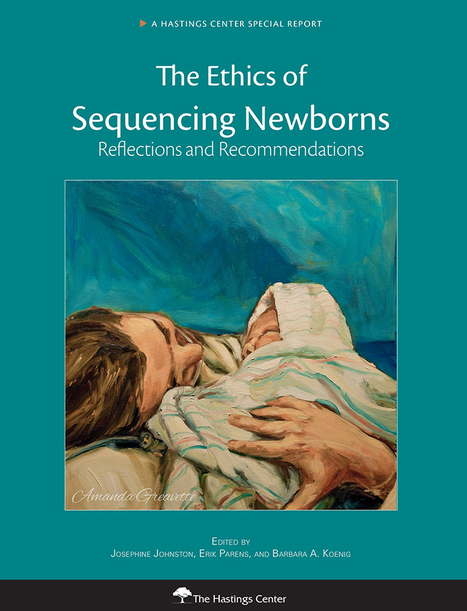 Your new post is loading...
 Your new post is loading...

|
Scooped by
HAS-veille
September 27, 2018 8:27 AM
|
Severe combined immunodeficiency (SCID) is characterized by a major T cell deficiency. Infants with SCID are asymptomatic at birth but die from infections in the first year of life if no

|
Scooped by
HAS-veille
September 24, 2018 11:08 AM
|

|
Scooped by
HAS-veille
September 21, 2018 7:47 AM
|

|
Scooped by
HAS-veille
September 21, 2018 7:36 AM
|
Newborn screening (NBS) for cystic fibrosis (CF) has been shown to be advantageous for children with CF, and has thus been included in most NBS programs using various algorithms. With this study, we intend to establish the most appropriate algorithm for CF-NBS in the Portuguese population, to determine the incidence, and to contribute to elucidating the genetic epidemiology of CF in Portugal. This was a nationwide three-year pilot study including 255,000 newborns (NB) that were also screened for congenital hypothyroidism (CH) and 24 other metabolic disorders included in the Portuguese screening program. Most samples were collected in local health centers spread all over the country, between the 3rd and 6th days of life. The algorithm tested includes immunoreactive trypsinogen (IRT) determination, pancreatitis associated protein (PAP) as a second tier, and genetic study for cases referred to specialized clinical centers. Thirty-four CF cases were confirmed positive, thus indicating an incidence of 1:7500 NB. The p.F508del mutation was found in 79% of the alleles. According to the results presented here, CF-NBS is recommended to be included in the Portuguese NBS panel with a small adjustment regarding the PAP cut-off, which we expect to contribute to the improvement of the CF-NBS performance. According to our results, this algorithm is a valuable alternative for CF-NBS in populations with stringent rules for genetic studies.

|
Scooped by
HAS-veille
September 21, 2018 7:31 AM
|
All of the worldwide newborn screening (NBS) for lysosomal storage diseases (LSDs) is done by measurement of lysosomal enzymatic activities in dried blood spots (DBS). Substrates used for these assays are discussed. While the positive predictive value (PPV) is the gold standard for evaluating medical tests, current PPVs for NBS of LSDs cannot be used as a performance metric due to statistical sampling errors and uncertainty in the onset of disease symptoms. Instead, we consider the rate of screen positives as the only currently reliable way to compare LSD NBS results across labs worldwide. It has been suggested that the expression of enzymatic activity data as multiple-of-the-mean is a way to normalize datasets obtained using different assay platforms, so that results can be compared, and universal cutoffs can be developed. We show that this is often not the case, and normalization is currently not feasible. We summarize the recent use of pattern matching statistical analysis together with measurement of an expanded group of enzymatic activities and biomarkers to greatly reduce the number of false positives for NBS of LSDs. We provide data to show that these post-enzymatic activity assay methods are more powerful than genotype analysis for the stratification of NBS for LSDs.

|
Scooped by
HAS-veille
September 21, 2018 7:29 AM
|
Newborn screening for several lysosomal disorders can now be accomplished successfully for case finding. However, many cases identified do not require immediate intervention and it is not yet clear, for some disorders, if there is a benefit in early diagnosis for those cases, or what should be called a benefit. Diagnosing adult-onset cases, especially when there are quite imperfect genotype-phenotype correlations, represents a significant expansion of what has heretofore been considered the aim of newborn screening. This mission creep should be carefully discussed, and certain aspects of newborn screening strengthened. We should all proceed with caution in this field.

|
Scooped by
HAS-veille
May 23, 2018 9:04 AM
|
Pediatric Annals | Newborn screening in the United States is an important public health measure to provide early detection for specified disorders when early treatment is both possible and beneficial. As technology improves, newborn screening can be offered for many more conditions. In the past 10 years, screening has expanded to include severe combined immunodeficiency, congenital heart disease, lysosomal storage

|
Scooped by
HAS-veille
March 7, 2018 9:01 AM
|
n° spécial de "Pediatric Clinics of North America"

|
Scooped by
HAS-veille
February 14, 2018 4:11 AM
|
|

|
Scooped by
HAS-veille
September 26, 2018 8:17 AM
|
Objective Beta thalassaemias are a group of hereditary red cell disorders resulting in a reduced or absent production of the main adult haemoglobin, adul

|
Scooped by
HAS-veille
September 24, 2018 6:19 AM
|
Spinal muscular atrophy () is an inherited neuromuscular disorder and a leading genetic cause of infant death worldwide. However, there is no routine screening program for in the . Lack of treatments and the inability of screening tests to accuratel

|
Scooped by
HAS-veille
September 21, 2018 7:42 AM
|

|
Scooped by
HAS-veille
September 21, 2018 7:34 AM
|

|
Scooped by
HAS-veille
September 21, 2018 7:30 AM
|
Prospective full-population newborn screening for multiple lysosomal storage disorders (LSDs) is currently practiced in a few NBS programs, and several others are actively pursuing this course of action. Two platforms suitable for multiple LSD screening—tandem mass spectrometry (MS/MS) and digital microfluidic fluorometry (DMF)—are now commercially available with reagent kits. In this article, we review the methods currently used for prospective NBS for LSDs and objectively compare their workflows and the results from two programs in the United States that screen for the same four LSDs, one using MS/MS and the other DMF. The results show that the DMF platform workflow is simpler and generates results faster than MS/MS, enabling results reporting on the same day as specimen analysis. Furthermore, the performance metrics for both platforms while not identical, are broadly similar and do not indicate the superior performance of one method over the other. Results show a preponderance of inconclusive results for Pompe and Fabry diseases and for Hurler syndrome, due to genetic heterogeneity and other factors that can lead to low enzyme activities, regardless of the screening method. We conclude that either platform is a good choice but caution that post-analytical tools will need to be applied to improve the positive predictive value for these conditions.

|
Scooped by
HAS-veille
June 5, 2018 10:08 AM
|
Newborn screening (NBS) identifies infants with rare conditions to prevent death or the onset of irreversible morbidities. Conditions on the Health and Human Services Secretary’s Recommended Uniform Screening Panel have been adopted by most state NBS programs, providing a consistent approach for identification of affected newborns across the United States. Screen-positive newborns are identified and referred for confirmatory diagnosis and follow-up. The designation of a clinically significant phenotype precursor to a clinical diagnosis may vary between clinical specialists, resulting in diagnostic variation. Determination of disease burden and birth prevalence of the screened conditions by public health tracking is made challenging by these variations. This report describes the development of a core group of new case definitions, along with implications, plans for their use, and links to the definitions that were developed by panels of clinical experts. These definitions have been developed through an iterative process and are piloted in NBS programs. Consensus public health surveillance case definitions for newborn screened disorders will allow for consistent categorization and tracking of short- and long-term follow-up of identified newborns at the local, regional, and national levels.

|
Scooped by
HAS-veille
March 8, 2018 5:25 AM
|
Healthcare professionals’ and parents’ experiences of the confirmatory testing period: a qualitative study of the UK expanded newborn screening pilot

|
Scooped by
HAS-veille
February 14, 2018 7:10 AM
|
|

 Your new post is loading...
Your new post is loading...
 Your new post is loading...
Your new post is loading...











